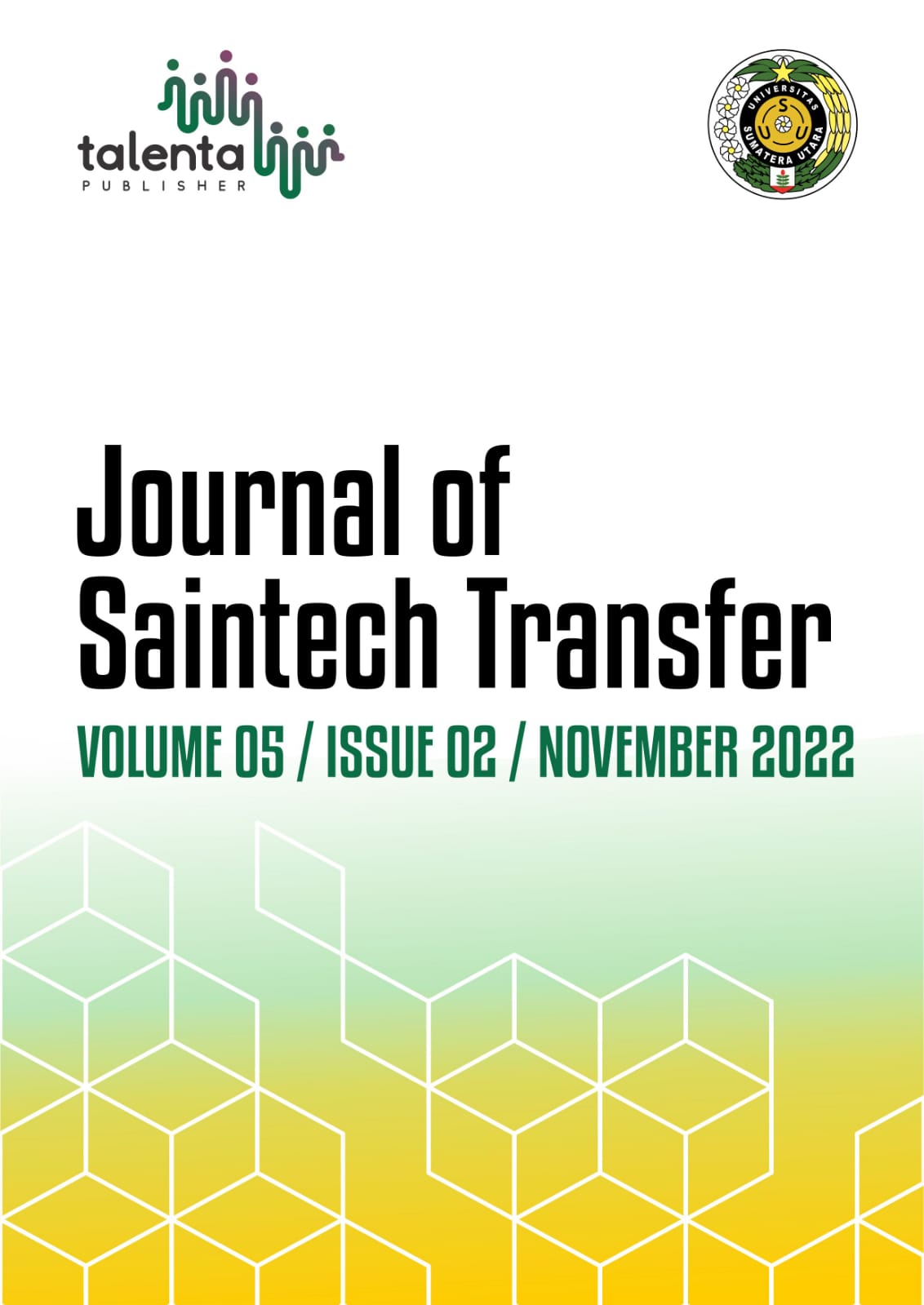Silkworm (Tubifer sp) Business Development Through a Combination Model of Flowing Water Circulation and Vegetables
DOI:
https://doi.org/10.32734/jst.v5i2.10374Keywords:
silkworm (Tubifex Sp), single parent, biomass, natural food, fermentationAbstract
Single Parent women in Pudak Village high, namely around 200 people.Being a Single Parent Woman is of course required to be independent so that they can make their children successful and have a better life. One solution that can be done is to empower single parent women to become strong women so they can prosper in their families, through cultivation activities for the development of silkworm (Tubifer sp) cultivation as freshwater fish seed feed, because currently there are quite large marketing opportunities, and there are still unable to meet market demand. To achieve the objective of the activity, technology transfer was carried out, through the implementation of the silkworm cultivation model using a running water system with vegetable feed ingredients such as carrots, mustard greens, tomatoes, and carrots which are market waste that is no longer utilized. The form of technology transfer that is applied through the Learning by doing model. The results obtained show that single-parent women can cultivate silkwormsand understand the use of market waste in the form of waste vegetables (mustard), and fruits (tomatoes, papayas, oranges, banana peels).
Downloads
References
Ngatung JE, Pangkey H, Mokolensang JF. “Cultivation of silkworms (Tubifex sp.) with a flowing water system at the tatelu freshwater aquaculture fisheries center (BPBAT), North Sulawesi Provinceâ€. Aquaculture e-Journal. Vol. 5. 2017.
Lastris FM. Cultivation of silk worms (Tubifex Sp). Freshwater Aquaculture Fishery Center (BPBAT) Tatelu. Manado. 2020.
Gunadi B. Minimization of nitrogen waste in catfish (Clarias gaviepinus) cultivation with an aquaculture system based on a food chain. Faculty of Fisheries and Marine IPB-Bogor. 2012.
Suryadi D, Helmiati S, Sutadi R. “Effect of thickness of silkworm culture media (Tubifex sp) using catfish culture waste sludgeâ€. Gadjahmada University Fisheries Journal. Vol. 19, No. 2. pp. 97. 2017.
Thalita T. How to Cultivate Silkworms for beginners. https://www.gramedia.com>cultivation. 2017.
Febrianti D. The effect of daily fertilization with chicken droppings on silkworm population growth and biomass. Thesis. Faculty of Fisheries and Maritime Affairs. Bogor Agricultural Institute. 2004.
Hamron N, Johan Y, Brata B. “Silkworm population growth analysis (Turbifex sp) as a natural food sourceâ€. Naturalis- Research Journal of Natural Resources and Environment Processing. Vol. 7. No. 2. 2018.
Hidayat S, Iskandar, Mulyadi. Maintenance of silk worms (Tubifex sp) with different doses of fertilizer in a recirculation system. Faculty of Fisheries and Maritime Affairs, Riau University. 2016.
Downloads
Published
How to Cite
Issue
Section
License
Copyright (c) 2022 Journal of Saintech Transfer

This work is licensed under a Creative Commons Attribution-ShareAlike 4.0 International License.















